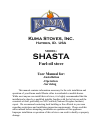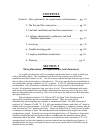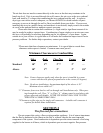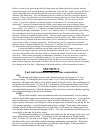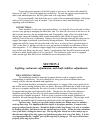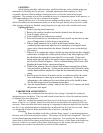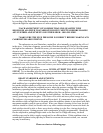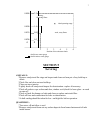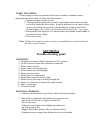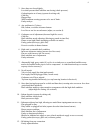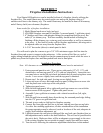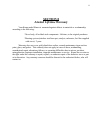
CONTENTS
Section 1– Stove placement, air requirements, and clearances….. pg. 1-2
2– The flue and flue connections………………………... pg. 2-3
3– Fuel tank installation and fuel line connections……… pg. 3-4
4– Lighting, adjustments to carburetor, and draft
stabilizer adjustments………………………………. pg. 4-7
5– Servicing…………………………………………….. pg. 7-8
6– Trouble-shooting guide……………………………..... pg. 8-9
7– Fireplace installation instructions………….………… pg. 10
8- Warranty………………………………………………pg. 11
SECTION 1
Stove placement, air requirements, and clearances
Try to pick a location that will be somewhat central in the house or room in which you
wish to install the Shasta. Due consideration of the fuel tank location, ease of fuel line
installation, and flue location is wise. You will want to read the fuel tank section to get a better
idea of where to locate the tank as well as the stove. The stove must be placed on hearth that is
non-combustible, having a thickness of 3/8” or greater. A 24”x30” minimum hearth pad area is
recommended. Once a location is established, the stove can be placed on the hearth and
leveled. It is absolutely imperative that your stove is level. There are adjustment bolts under
each corner of the pedestal base should these adjustments be necessary, or if a leg set is used,
there are adjustment bolts on each leg. Place a level on top of the pedestal base both directions
and adjust until level.
This unit has been tested to U.L. 896 and 307A by Omni Test Laboratories and is
approved for installation and use in manufactured homes. There are some special
considerations when installing into a mobile or manufactured home. The flue system must
consist of a 4” diameter CLASS “L”, U.L. 641 type insulated chimney, and either a 4” single or
double-wall stove pipe connector. A CLASS “A” metal chimney or a masonry chimney may be
used, but must have a 4” stainless steel liner. Dura-Vent Pellet Vent (4”) may be used as either
a connector or chimney or both. The manufactured home installation also requires an outside
combustion air source. If outside air is accessed through the floor, a 4” diameter or larger duct
should be installed through the hearth and floor, extending past the insulation barrier on the
underneath side of the home. Make sure there is a rodent screen with a maximum 1/4” x 1/4”
opening placed over the duct opening to prevent rodents from accessing the stove bottom. A
standard outside air (dryer-vent type) kit may be used or an outside air kit (#4OAVK) may be
obtained from your dealer.
1



